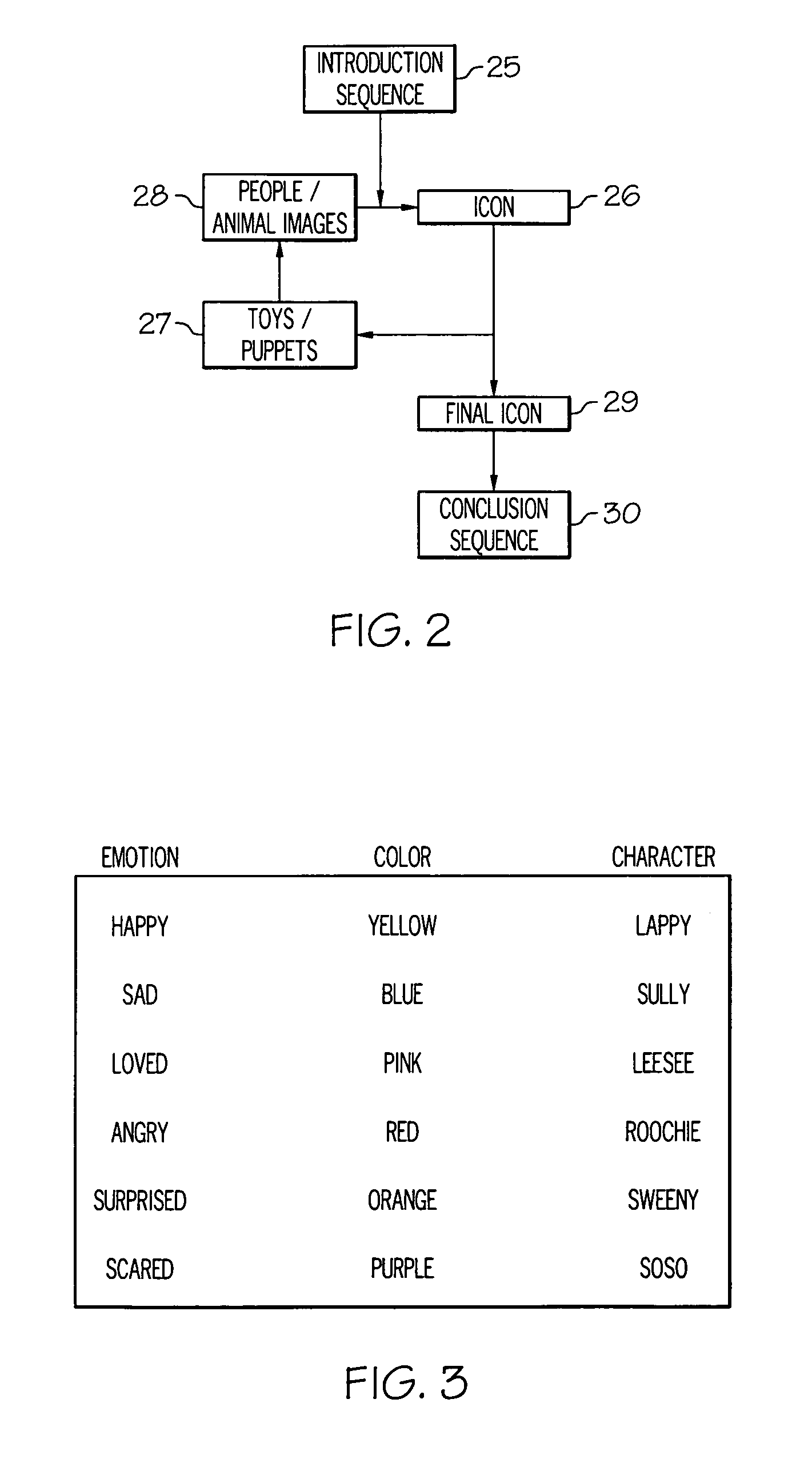Method for improving the emotional quotient in infants and children
a technology for infants and children, applied in the field of emotional education, can solve problems such as inconsistent or predictable emotions, and achieve the effects of improving emotional education services, analyzing emotional content in interactions, and working and functioning with other peopl
- Summary
- Abstract
- Description
- Claims
- Application Information
AI Technical Summary
Benefits of technology
Problems solved by technology
Method used
Image
Examples
embodiment
PREFERRED EMBODIMENT
[0041]The preferred embodiment of the invention envisions a video that is stored on a recordable media. The video is prepared by a professional who selects the emotions, images, markers and sequence for the video. The video is then given to an adult caregiver of a child. The adult then shows the video to the child to teach the child about emotions. Thus the adult can use the skills of the professional when the professional is not present. This video includes any combination of sight and sound that can be stored on some kind of recordable media. The recordable media can be a VHS tape, a DVD, a MPEG or other electronic format. The invention is not limited to any given recordable media. The video is shown on some kind of display. The preferred embodiment envisions a television or computer screen, but the invention is not limited to any particular display. For most recordable media, the video will also require a player. For example, a VHS tape will require a VHS play...
PUM
 Login to View More
Login to View More Abstract
Description
Claims
Application Information
 Login to View More
Login to View More - R&D
- Intellectual Property
- Life Sciences
- Materials
- Tech Scout
- Unparalleled Data Quality
- Higher Quality Content
- 60% Fewer Hallucinations
Browse by: Latest US Patents, China's latest patents, Technical Efficacy Thesaurus, Application Domain, Technology Topic, Popular Technical Reports.
© 2025 PatSnap. All rights reserved.Legal|Privacy policy|Modern Slavery Act Transparency Statement|Sitemap|About US| Contact US: help@patsnap.com



